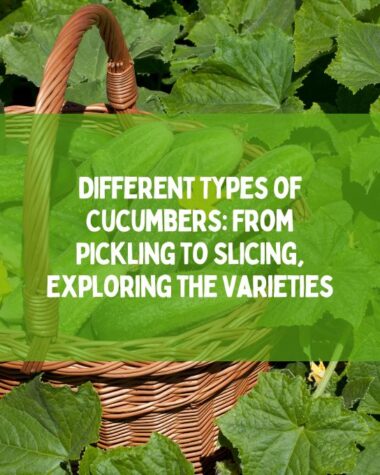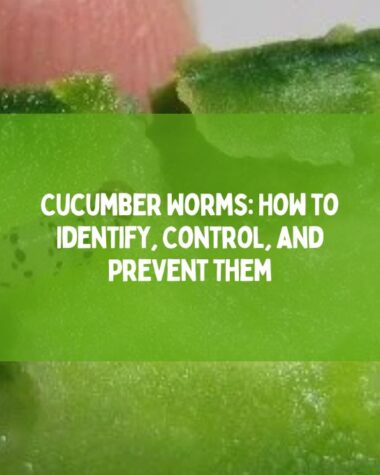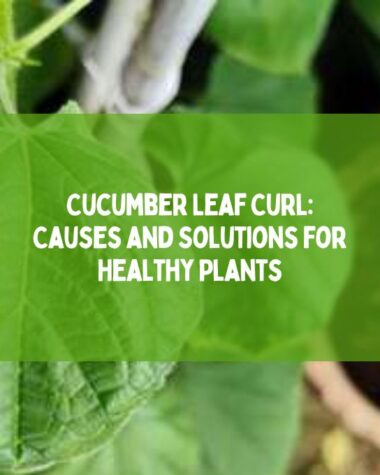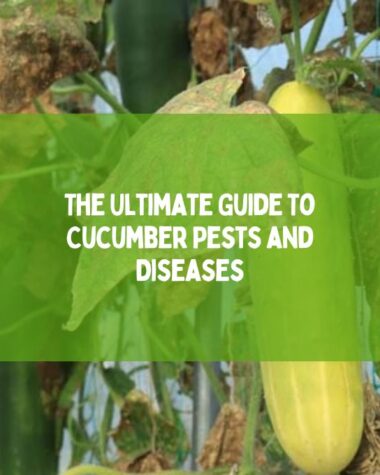If you’re looking for a crunchy and refreshing snack, look no further than the Persian cucumber. These smaller cucumbers, known for their thin skin and seedless interior, are a popular type of cucumber that offer a number of nutritional benefits.
Keep reading to learn more about Persian cucumbers, including how they differ from English cucumbers, where to buy them, and how to best incorporate them into your diet and recipes.
What is a Persian cucumber?
Persian cucumbers, as we previously mentioned, are a smaller and more delicate variety of cucumber compared to other cucumber varieties. Typically, they range from 4-6 inches long and have a mild, sweet taste. Unlike other cucumbers, Persian cucumbers are seedless, and their thin skin lends a crisp texture to each bite.

Origins of Persian Cucumbers
The journey of Persian cucumbers began in the Beit Alpha region of Palestine (Now in Northern Israel). The region’s unique climate and environmental conditions played a crucial role in shaping the characteristics of this cucumber variety.
Through careful crossbreeding and selection, European settlers aimed to develop a cucumber that would be less prone to diseases and exhibit exceptional flavor and texture. The result was the creation of Persian cucumbers, which soon became popular for their outstanding taste and crispness.
Where to buy Persian cucumbers?
If you want to try Persian cucumbers for yourself, you can find them in most grocery stores and supermarkets. They are usually located in the produce aisle or the section where you see other cucumber varieties.
Growing Persian Cucumbers at Home
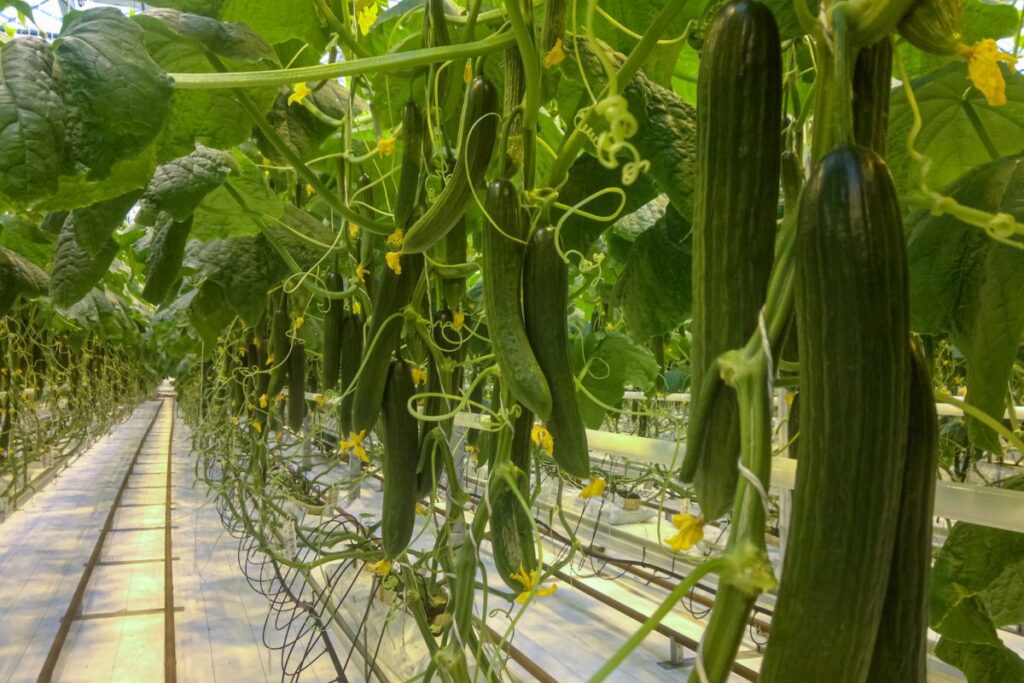
Looking to grow Persian cucumbers at home? Learn how to cultivate these delicious and nutritious cucumbers with our comprehensive guide. Discover step-by-step instructions, helpful tips, and expert advice to ensure a successful harvest of fresh and crisp cucumbers right in your own backyard.
Choosing the Right Location for Your Cucumber Patch
The first step to a successful Persian cucumber harvest is selecting the perfect spot in your backyard. Consider the following factors when choosing a location for your cucumber patch:
- Sunlight: Persian cucumbers thrive in full sunlight, so choose an area that receives at least 6-8 hours of direct sunlight each day.
- Soil Quality: Ensure the soil is well-draining, rich in organic matter, and has a pH level between 6.0 and 7.0.
- Protection: Find a spot that is sheltered from strong winds, as they can damage the cucumber vines.
Preparing the Soil for Planting

Preparing the soil is crucial for healthy Persian cucumber growth. Follow these steps to get your soil ready for planting:
- Clear the Area: Remove any weeds, rocks, or debris from the designated cucumber patch.
- Loosen the Soil: Use a garden fork or tiller to loosen the soil to a depth of at least 12 inches. This improves drainage and allows the roots to penetrate easily.
- Add Organic Matter: Incorporate compost or well-rotted manure into the soil to enhance its fertility and moisture-retaining capacity.
Starting from Seeds or Seedlings?
Deciding whether to start from seeds or seedlings is an important consideration. Let’s explore both options:
- Seeds: If you opt for seeds, sow them directly into the soil once the danger of frost has passed. Plant the seeds about one inch deep, spacing them approximately 12 inches apart.
- Seedlings: Alternatively, you can start with seedlings purchased from a local nursery. Transplant the seedlings into your prepared cucumber patch, ensuring they are properly spaced.
Proper Watering Techniques
Cucumbers have high water requirements, so proper watering is essential for their growth and productivity. Here’s what you need to know:
- Consistent Moisture: Maintain a consistent level of moisture in the soil throughout the growing season. Avoid letting the soil dry out completely, as this can result in bitter-tasting cucumbers.
- Watering Frequency: Water the plants deeply once or twice a week, ensuring the water reaches the roots. Using a soaker hose or drip irrigation system can help deliver water efficiently and prevent foliage diseases.
- Mulching: Apply a layer of organic mulch, such as straw or wood chips, around the cucumber plants. This helps conserve moisture and suppress weed growth.
Providing Support for Vining Cucumbers
Persian cucumbers are vining plants and require support to grow vertically. Consider the following support options:
- Trellis: Install a sturdy trellis or fence behind your cucumber patch, allowing the vines to climb upward. This method saves space and facilitates better air circulation, reducing the risk of diseases.
- Cages or Stakes: Alternatively, you can use cages or stakes to support individual cucumber plants. Make sure they are tall enough to accommodate the vigorous growth of the vines.
Fertilizing the Persian Cucumber Plants
To ensure robust growth and abundant fruit production, it’s important to provide the Persian cucumber plants with proper nutrition. Follow these guidelines:
- Organic Fertilizers: Use organic fertilizers, such as compost or well-rotted manure, to enrich the soil before planting. These natural amendments provide a slow release of nutrients over time.
- Additional Fertilization: As the cucumber plants grow, apply a balanced fertilizer according to the manufacturer’s instructions. This will help maintain nutrient levels throughout the growing season.
Pest and Disease Management
Cucumbers can be susceptible to various pests and diseases. Here are some tips to keep your plants healthy:
- Companion Planting: Grow companion plants like marigolds, nasturtiums, or radishes near your cucumbers to deter pests.
- Regular Inspections: Monitor your plants regularly for signs of pests or diseases. Early detection allows for timely intervention, preventing further damage.
- Organic Pest Control: Use organic pest control methods, such as neem oil or insecticidal soap, to manage common cucumber pests like aphids, cucumber beetles, or spider mites.
Persian Cucumbers Harvesting and Storage
The moment you’ve been waiting for—harvesting your homegrown Persian cucumbers! Follow these guidelines for a successful harvest:
- Timing: Harvest the cucumbers when they are firm, uniformly green, and reach the desired size (usually 6-8 inches long). Avoid overripe cucumbers, as they can be bitter.
- Cutting Technique: Use a sharp knife or pruning shears to cut the cucumbers from the vine. Leave a small stem attached to the fruit.
- Storage: Store freshly harvested cucumbers in the refrigerator to maintain their crispness and flavor. Consume them within a week for the best taste.
Related Reading:
- Kirby Cucumber: A Versatile and Nutritious Addition to Your Kitchen
- Are Cucumbers a Fruit or Vegetable?
- Japanese Cucumber Info: How to Grow Japanese Cucumber From Seed?
- Everything You Need to Know About Baby Cucumbers
What is the difference between Persian cucumbers and English cucumbers?
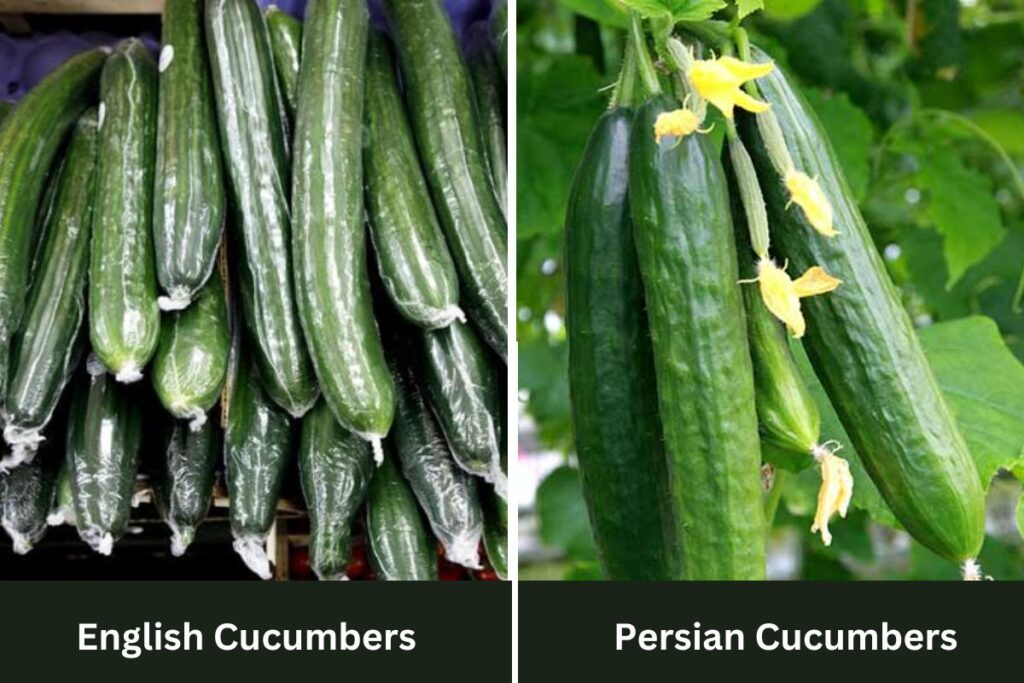
Here is the table of differences between Persian cucumbers and English cucumbers
| Characteristic | Persian Cucumbers | English Cucumbers |
| Origin | Beit Alpha region of northern Israel | England |
| Size | Generally smaller, about 6-8 inches in length | Larger, can reach up to 12 inches in length |
| Skin Color | Thin, smooth, and vibrant green | Thicker, darker green skin with ridges |
| Texture | Crisp and crunchy | Crisp and juicy |
| Flavor | Sweet and mild | Mild and refreshing |
| Seeds | Typically seedless or contain small, soft seeds | Contain larger and firmer seeds |
| Bitterness | Rarely bitter | May have a slight bitterness |
| Usage | Ideal for salads, snacking, and pickling | Versatile, suitable for salads, sandwiches, and cooking |
| Shelf Life | Relatively shorter shelf life | Longer shelf life |
| Growing Preferences | Thrives in warm climates, prefers full sunlight | Can tolerate cooler temperatures, adapts to various climates |
| Disease Resistance | Developed for improved disease resistance | Varies depending on the variety |
| Culinary Applications | Commonly used in Mediterranean and Middle Eastern cuisines | Widely used in British and European culinary traditions |
Appearance and taste
The most obvious difference between Persian cucumbers and English cucumbers is their appearance. Persian cucumbers are smaller and have thin skin, while English cucumbers are longer and usually have thicker and darker green skin.
Additionally, Persian cucumbers are sweeter and less watery compared to English cucumbers.
Usage
English cucumbers are commonly used in soups and salads because of their texture and milder flavor. On the other hand, Persian cucumbers are usually eaten raw or used in pickling because of their size and mild taste.
What are the benefits of eating Persian cucumbers?
Discover the numerous benefits of adding Persian cucumbers to your diet. Packed with nutrients and hydration, these cucumbers offer a refreshing crunch and contribute to overall health and well-being.

From promoting hydration to supporting digestion and providing essential vitamins, Persian cucumbers are a delicious and nutritious addition to your meals.
Low-Calorie Content
One of the most notable benefits of Persian cucumbers is their low-calorie content. One medium-sized cucumber contains only 16 calories, making it an ideal snack choice for those on a low-calorie diet.
Rich in Nutrients
Persian cucumbers are also a good source of vitamin C, vitamin K, and potassium. These nutrients are essential for maintaining a healthy immune system, blood pressure, and bone health. Additionally, they contain antioxidants that can help protect your cells from damage caused by harmful molecules.
Improves Digestion
The high water and fiber content of Persian cucumbers can help regulate bowel movements and prevent constipation. Additionally, these cucumbers have a mild diuretic effect that helps flush out toxins from the body.
How to store Persian cucumbers?
Here are 2 ways to store Persian cucumbers.
In the crisper drawer
When storing Persian cucumbers, place them in the refrigerator’s crisper drawer to keep them fresh for up to a week.
Avoid direct sunlight
Keep them away from direct sunlight and sources of heat to prevent dehydration. To keep them fresh for longer, wrap them in a paper towel before placing them in the fridge.
Can you eat the skin of Persian cucumbers?
Yes, you can
Unlike other cucumbers, Persian cucumbers have thin, edible skin that does not contain any harmful chemicals. Therefore, there’s no need to peel them. Just give them a good wash before consuming them.
Are Persian cucumbers good for pickling?
Yes, they are
The smaller size and thin skin of Persian cucumbers make them perfect for pickling. You can enjoy them as a crunchy and low-calorie snack, or add them to your salads as a flavorful ingredient.
Overall, Persian cucumbers are a great addition to any diet. They offer a variety of health benefits, are versatile in their uses, and are easily accessible at most grocery stores.
Related Reading:
- Growing Black Krim Tomatoes: The Ultimate How-To for Tomato Lovers
- White Pumpkins: A Guide to This Unique and Versatile Variety
- Yellow Eggplant: The Uncommon and Nutritious Vegetable
- How To Harvest Carrots In Your Garden?
- What is the Difference Between Zucchini and Courgette?
Frequently Asked Questions About Persian Cucumbers
Here are some frequently asked questions about Persian cucumbers.
Can I use Persian cucumbers in recipes that call for English cucumbers?
Yes, Persian cucumbers can be used in place of English cucumbers in most recipes. Just keep in mind that since they are smaller, you may need to use more of them to achieve the same volume of cucumber as you would with an English cucumber.
Where can I find Persian cucumbers to buy?
Persian cucumbers can typically be found in most grocery stores, especially those that carry a wide variety of produce. You can also find them at farmers’ markets or specialty stores that cater to Middle Eastern cuisine.
Are all cucumbers considered Persian cucumbers?
No, cucumber is a blanket term that refers to a variety of different cucumber varieties. Persian cucumbers are a specific type that has certain characteristics, such as their smaller size and thin skin. They are an improved class of cucumbers developed specifically for their flavor and texture.
Can I eat the skin of a Persian cucumber?
Yes, the skin of a Persian cucumber is edible and contains many of the same nutrients as the flesh. In fact, the skin is often less bitter and more tender than the skin of other cucumber varieties, so many people prefer to leave it on.
How should I store Persian cucumbers?
Like most cucumbers, Persian cucumbers should be stored in the refrigerator. Place them in a plastic bag or container to help retain their moisture, and store them away from ethylene-producing fruits like apples, which can cause them to ripen and spoil more quickly.
Are Persian cucumbers vining or bush plants?
Persian cucumbers are vining plants, which means they need support to grow up off the ground. They can be grown on trellises or other structures to keep the vines off the ground and prevent them from sprawling.
What is the difference between a Persian cucumber and a burpless cucumber?
Burpless cucumbers are a type of cucumber that is nearly seedless and have thinner skin than other varieties, making them easier to digest and less likely to cause gas. Persian cucumbers are similar in some ways but are not necessarily classified as burpless cucumbers.
Can I pickle Persian cucumbers?
Yes, Persian cucumbers can be pickled just like other cucumber varieties. Their thin skin and crisp texture make them especially suited for pickling.


